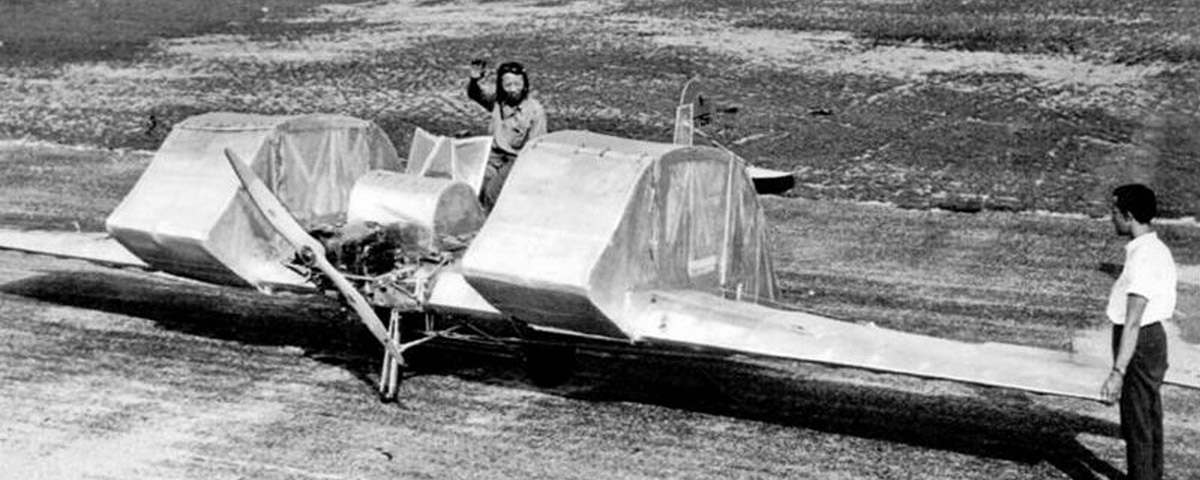Kouns-Craft “Dirigible Helicopter”
“East is East and West is West, and never the twain shall meet,” wrote Rudyard Kipling. A corollary to that might be an airplane is an airplane and a dirigible is a dirigible, and never the twain shall meet. Koun Young-Ho was determined to prove both statements incorrect.
Described by the press as a “Chinese cook,” although apparently he was actually an attorney, Koun Young-Ho spent six years and $6,000 of his own money during the 1920 and ’30s to construct not just the first Chinese-American aircraft, but an aircraft that remains unique in aviation history. Koun was interested in nothing less than solving the problem of vertical takeoff and landing. His solution was what he called a Dirigible Helicopter, which combined the use of gasbags for buoyancy with a tilting engine mount to provide propulsive power in either the vertical or horizontal planes, or at any angle in between. Koun insisted his machine would be “capable of ascending vertically or at any angle within reasonable limits,” as well as able to “hover over a certain location indefinitely and to descend either at an angle, as the common airplane, or vertically as a helicopter.”
Patented on February 7, 1928, Koun’s original design called for three engines, two of which were to be mounted rigidly for forward thrust only and the third arranged to tilt. The design also provided for no fewer than 14 hydrogen-filled “annular gasbags,” reminiscent of automobile tire inner tubes, affixed to the top surface of the monoplane wing. The buoyancy tanks were to be fed from two larger supply tanks affixed to the sides of the fuselage.
By 1939, when the prototype aircraft was completed, the design had been amended. The multiple buoyancy tank system was replaced by two large main buoyancy tanks fitted to the tops of the wings, filled with helium under pressure rather than hydrogen. Although this undoubtedly simplified the buoyancy system, it must have also significantly reduced the pilot’s field of view from the cockpit. Another change was a reduction from three engines to one centrally mounted engine on a controllable mount that could be adjusted upward for lift, forward for propulsion or downward to descend. The landing gear and tail were made from parts of other airplanes, but the wings, buoyancy tanks and engine mount were of Koun’s own design.
The press was called to witness the first flight at Roosevelt Field on Long Island, but the event did not go well. The 37-hp Continental engine proved difficult to start. Then, when it finally did start, there was nobody in the cockpit. The unoccupied aircraft ran away out of control and barely missing a number of parked airplanes, before the engine finally stalled due to a fuel blockage. It seems no other attempt was ever made to fly the craft. And while the Civil Aeronautics Administration did issue it a registration number, no experimental permit was ever issued, nor was anyone involved in the project a licensed pilot. As a result Koun carted his aircraft away to an unknown destination, and it was never heard of again. Still, the Kouns-Craft remains a unique concept in aeronautical design. This entire story might seem like a bad joke were it not for Koun’s original patents, as well as photos of the actual aircraft—with its inventor in the cockpit.

